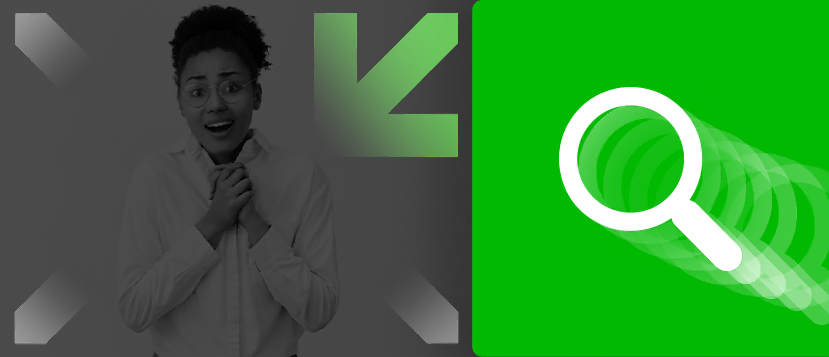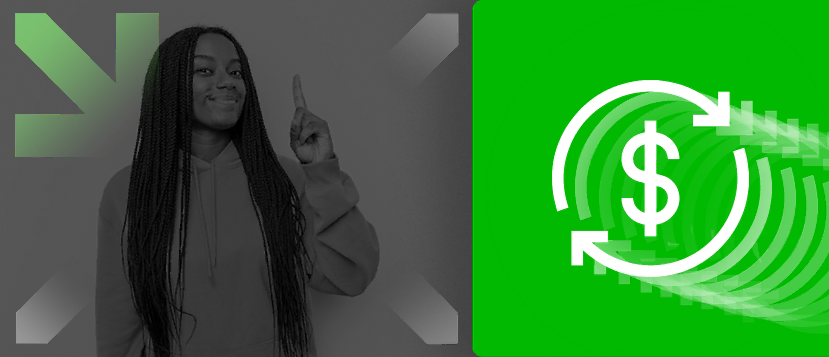Despite having very different appearances, all odds types serve the same function. Every type used is consistent in showing bettors how much they can profit from each wager. For every sport, odds are available in every format. In this article, we will review the most common types.
Betting Glossary: Terms and Definitions
Knowing the odds is crucial if you intend to begin betting, whether it be on sports, in a casino, or on anything else. Knowing the basic betting odds and being able to read and understand their different formats are essential for placing wise and winning bets.
Decimal (European), moneyline (American), and fractional (British) are the three primary categories of betting odds.
There is no difference in payouts between these two methods of presenting the same odds. This implies that any of the previously stated odds can be used to convert and display the chances, or the percentage probability, of an event occurring.
You can see some of the betting terms explained in the sections below.
Converter: Review

It is helpful to be able to swiftly convert betting odds to the format of your choice because you will frequently see them presented in a selection of formats. In the United Kingdom, bettors typically use fractional ones, and throughout Europe, decimal ones are more common. American odds are naturally more popular with US bettors. Nonetheless, fractional odds are frequently utilized in horse racing, even in the United States. There are occasionally Asian formats to consider as well.
Kenyan bookmakers, including BetPawa, use various odd types.
You can perform the calculations manually if you know how to convert odd types. Use this betting converter to swiftly convert between American, decimal, fractional, and probability odds, and so forth. You could make a mistake, though, and this is a time-consuming process. This betting guide can assist you in determining your potential profit margin when placing a wager quickly based on your stake amount.
How Does Odds Converter Work?

By changing a value to a known odd type, the converter lets you make sense of any odds you see on any betting site. To fit your betting preferences, you can modify the odd type on this page; for instance, if you use a particular betting site and discover they use fractional ones.
Types

We must first grasp the idea of chance in order to comprehend betting odd types. The probability that something will occur is called chance. Also known as the probability, it is frequently expressed as a percentage. Now, let’s roll the dice. Each outcome of a dice roll has a probability of 1 out of 6.
There is an equal probability that the dice will land on any one of the six numbers. This translates to a 16.66% chance (or probability) in percentage terms that any one of the six numbers will be drawn.
How did we figure this out? Just divide 100% by the six potential results.
Fractional
Fractional odds are also known as British. They can be expressed as a ratio, like six-to-one, or as a fraction, like 6/1. The amount you would win divided by the amount you are betting is known as fractional odds. The amount you would win at the top of the fraction is shown to them as the numerator, and the amount you are betting on the bottom is represented by the denominator.
American/ Moneyline
American odds are sometimes referred to as moneyline ones. They are represented by a plus (+) or minus (-) symbol, where the plus sign denotes the higher payout for the lower probability event.
Decimals
Your initial stake is deducted from your possible winnings when using decimal odds. Never forget to factor in your initial stake when calculating your potential net profit. Given that this odd type merely doubles your stake, the break-even point is 2.0. Decimal odds below 2.0 mean the potential return will be less than your stake. Positive odds above 2.0 indicate that there is a chance that your potential return will exceed your stake. Because the true odds will be determined, betting parlays with decimal odds is also the most cost-effective option.
Implied Probability
Every set of odds will always indicate the implied probability of success that the calculator will show. A probability of 33.33% is implied by +200, but an 83.33% probability is implied by -500. This implied probability is the likelihood that those odds would be justified only if the underlying event happened. This covers all types of wagers, including casino bets, horse racing, sports betting, and entertainment wagers. Generally speaking, bettors are looking for situations in which the implied probability is less than the actual probability.
Conversion

Gaining some basic knowledge about converting betting odds can be very beneficial. In fact, you’re not improving your chances of long-term success in the cutthroat world of sports betting if you don’t know how to translate betting odd types into their corresponding implied probabilities. To evaluate the possible value in a specific betting market, you must comprehend the implied probability underlying the odds that are displayed to you.
Furthermore, it is equally significant when evaluating the value associated with particular odds on a given result. An outcome is a value bet if the implied probability is lower than your personal estimate of the likelihood that it will occur.
For your convenience, we offer a table that shows how odds are calculated depending on the type.
| Fractional | Decimal | American (Moneyline) | Implied Probability |
|---|---|---|---|
| 1/100 | 1.01 | -10000 | 99% |
| 1/5 | 1.2 | -500 | 83.3% |
| 2/9 | 1.22 | -450 | 81.8% |
| 1/4 | 1.25 | -400 | 80% |
| 2/7 | 1.29 | -350 | 77.8% |
| 3/10 | 1.3 | -333.3 | 76.9% |
| 1/3 | 1.33 | -300 | 75% |
| 4/11 | 1.36 | -275 | 73.3% |
| 2/5 | 1.4 | -250 | 71.4% |
| 4/9 | 1.44 | -225 | 69.2% |
| 1/2 | 1.5 | -200 | 66.7% |
| 8/15 | 1.53 | -187.5 | 65.2% |
| 4/7 | 1.57 | -175 | 63.6% |
| 8/13 | 1.62 | -162.5 | 61.9% |
| 4/6 | 1.67 | -150 | 60% |
| 8/11 | 1.73 | -137.5 | 57.9% |
| 4/5 | 1.8 | -125 | 55.6% |
| 5/6 | 1.83 | -120 | 54.5% |
| 10/11 | 1.91 | -110 | 52.4% |
| 1/1 | 2 | +100 | 50% |
| 21/20 | 2.05 | +105 | 48.8% |
| 11/10 | 2.1 | +110 | 47.6% |
| 23/20 | 2.15 | +115 | 46.5% |
| 6/5 | 2.2 | +120 | 45.5% |
| 5/4 | 2.25 | +125 | 44.4% |
| 11/8 | 2.38 | +137.5 | 42.1% |
| 7/5 | 2.4 | +140 | 41.7% |
| 6/4 | 2.5 | +150 | 40% |
| 8/5 | 2.6 | +160 | 38.5% |
| 13/8 | 2.62 | +162.5 | 38.1% |
| 7/4 | 2.75 | +175 | 36.4% |
| 9/5 | 2.8 | +180 | 35.7% |
| 15/8 | 2.88 | +187.5 | 34.8% |
| 2/1 | 3 | +200 | 33.3% |
| 11/5 | 3.2 | +220 | 31.2% |
| 9/4 | 3.25 | +225 | 30.8% |
| 12/5 | 3.4 | +240 | 29.4% |
| 5/2 | 3.5 | +250 | 28.6% |
| 13/5 | 3.6 | +260 | 27.8% |
| 11/4 | 3.75 | +275 | 26.7% |
| 3/1 | 4 | +300 | 25% |
| 16/5 | 4.2 | +320 | 23.8% |
| 10/3 | 4.33 | +333.3 | 23.1% |
| 7/2 | 4.5 | +350 | 22.2% |
| 4/1 | 5 | +400 | 20% |
| 9/2 | 5.5 | +450 | 18.2% |
| 5/1 | 6 | +500 | 16.7% |
| 11/2 | 6.5 | +550 | 15.4% |
| 6/1 | 7 | +600 | 14.3% |
| 13/2 | 7.5 | +650 | 13.3% |
| 7/1 | 8 | +700 | 12.5% |
| 15/2 | 8.5 | +750 | 11.8% |
| 8/1 | 9 | +800 | 11.1% |
| 9/1 | 10 | +900 | 10% |
| 10/1 | 11 | +1000 | 9.1% |
| 11/1 | 12 | +1100 | 8.3% |
| 12/1 | 13 | +1200 | 7.7% |
| 13/1 | 14 | +1300 | 7.1% |
| 14/1 | 15 | +1400 | 6.7% |
| 15/1 | 16 | +1500 | 6.2% |
| 16/1 | 17 | +1600 | 5.9% |
| 18/1 | 19 | +1800 | 5.3% |
| 20/1 | 21 | +2000 | 4.8% |
| 25/1 | 26 | +2500 | 3.8% |
| 33/1 | 34 | +3300 | 2.9% |
| 50/1 | 51 | +5000 | 2% |
| 66/1 | 67 | +6600 | 1.5% |
| 100/1 | 101 | +10000 | 1% |
| 1000/1 | 1001 | +100000 | 0.1% |
Conclusion

Comprehending the various systems allows players to search odd types from bookmakers across the globe that present their odd types in a single format. It also assists bettors in being precise and avoiding errors, like placing a large wager on a game with poor odds. Hopefully, our guide will help you choose your perfect wager no matter what odd system is used.